What No One Tells You About 9d nls vector
Enquiry Now!What is Computer nonlinear diagnosis ? What is 9d nls vector?
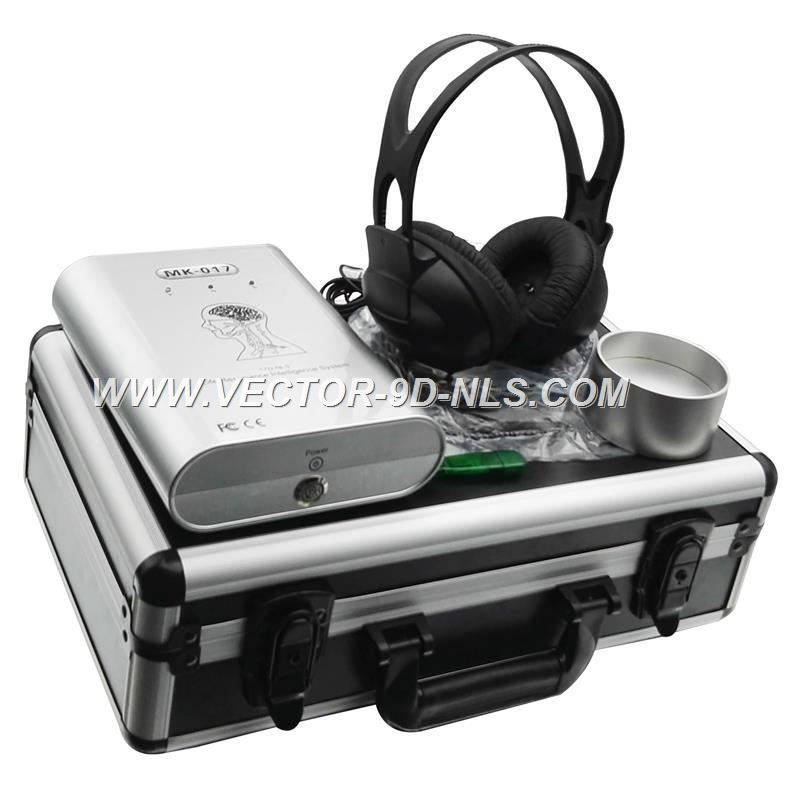
V.I. Nesterov
Nonlinear Diagnosis System (NLS) have been extensively used lately and are gaining ever growing popularity. Even in the few cases where the clinical symptoms look very typical the NLS diagnosis method provides extra information about the extension of affection and enables to judge a prognosis. In most cases it is of vital importance for diagnosis and consequently for the right choice of treatment. In 2000 it had been 20 years since Theodore Van Hoven developed the theory of quantum entropy logic that underlies the method. So nonlinear diagnosis appears to be the newest of all methods, of apparatus diagnostics. At any rate, his discovery became a significant landmark in diagnostic medicine. Nonlinear analysis was originally employed in organic chemistry to determine the composition of complex compounds. The originator of the NLS-diagnosis apparatus (Metatron) is acceptably thought to be Sviatoslav Pavlovich Nesterov who introduced a trigger sensor in 1988 and thus framed the conception of the apparatus. Active work was immediately started to develop and improve NLS-diagnosis systems. Clinical testing of the early equipment marked a period from 1990 through 1995. In the late 90s there was a fast growth in commercial apparatus production and a sudden leap in the quality of the results produced. The nonlinear diagnosis method is still in its developing stage. The diagnosis techniques are being improved so fast that the system versions have to be updated every six months. Due to the introduction of some new devices equipped with digital trigger sensors the NLS-diagnosis has become not only far more time efficient but also quite different in terms of quality. Apparently, some dynamic techniques, for instance three-dimensional visualization of investigation results will soon be introduced into everyday practice. The vegetative testing is just one example of ready adoption. The method is employed so widely that it implies a definite range of indications for its use rather than just its popularization. Research centers go on with their guest for some new investigation methods based on nonlinear analysis systems. The results appear to be quite promising. Unlike NMR and computer tomography, the NLS- analysis does not need high intensity fields. The method seems to have good prospects for metabolism study, particularly on a cell level. The advancement of the NLS-method proceeds along the path not only of technical innovations but also of new applications. Some minor surgical operations, biopsy for one, have been long monitored by ultrasound, fluoroscopy or computer tomography. Today there is an opportunity to have biopsy monitored by NLS. However, many surgeons focus their attention on using this method to perform major surgery. The cost of equipment for NLS- diagnosis is still very low as compared to some other apparatus methods. This is supposed to promote more extensive use of the method in countries with a rather low standard of living. Of all methods of apparatus diagnostics the NLS one provides a representation closed to a pathologic anatomic picture. This circumstance, along with innocuousness, promotes rapid development of the NLS- diagnosis.

Institute of Practical Psychophysics (IPP) – Ascending into the XXI century D.V. Koshelenko, S.A. Letun
The development of a new generation of nonlinear computer scanners (Metatron), which make use of multidimensional virtual imaging of the object under investigation, has enabled to substantially enhance the effectiveness of the NLS-Method and even expand its field of application, despite the competitiveness from MRT. The distinctive feature of multidimensional NLS imaging is an initially volumetric nature of scanning. The data thus received are an integral array, which facilitates the reconstruction of multidimensional virtual images of anatomical structures of the object under investigation. In this connection the virtual NLS is widely used, especially for angiographic investigations with a three-dimensional reconstruction of vascular formations. Another prospective field of application of the three-dimensional image reconstruction based on the data received by means of multidimensional NLS is the study of hollow organs with “virtual NLS-Scopy” involved. This kind of system was developed by Medintech Company for its high-speed multidimensional nonlinear scanners, Z series, and was called Hunter. Hugh resolution maintained during spiral scanning and the use of LAPP system (a system parallel processors with super high computational capability and speed of operation) enable to realize in the project the principle of “virtual NLS-scopy” at Voxel Z multimodal DICOM- compatible work station which is the principal system of imaging and ubsequent data processing with Medintech scanners. NLS images are made ready for visual analysis by means of 4-d Tissue original company-developed method that makes it possible not only to obtain virtual multidimensional icons of anatomical structures but also to single out a specific biological tissue of interest-an extra dimension-and in addition make an imaged bones, soft tissue and vessels at a time. The specific characteristic of the representation of virtual data by the Hunter system is simultaneous of surfaces of cavatus and extramural formations located outside the lumen of the cavity under examination (lymph nodes, vessels). The images that are received form a natural sequence of virtual NLS pictures. So some special navigation programs automatically define the path of motion of the “virtual scanner” by the center of the cavity under examination. The path of motion can be chosen by the operator by means of some other adjustments, which enable to specify the NLS picture in detail by changing of views. A raised representation of the cavity surface is also possible with some deliberate areas of shade involved. The produced sequences of NLS pictures can be easily transformed into a standard VHS video format by means of the epi-Clien program and thus be used in common video systems, specifically in teleradiology. The Hunter system is in the first place designed to reveal patients having obstructive processes in the upper respiratory passages, bulky esophageal, gastric or colonic formations, atherosclerotic lesions o large vessels, and disorders affecting paranasal sinuses, bladder, or spinal canal. The data gathered through “virtual NLS-scopy” enable to pick out in good time the optimum spot for biopsy and find out the extent of the required surgical intervention. This technique can be used both independently and as a useful linking element between tomographic, endoscopic and NLS investigations. The latest development of Medintech Company is Pincers stereo tactic manipulator integrated with a computer scanner, a convenient device for planning interventional procedures under the control of NLS. Pincers comprises a controlled stereo tactic manipulator (“arm”) and a flat gentry-mounted monitor and also a cable system and software. The system provides the physician with means of simulation and performing interventional procedures through interactive linkage between the virtual NLS and the real operational field.


Method of computer nonlinear analysis and its importance for diagnosis
V.D. Artyukh, U.A. Shovkoplyas, A.A. Gavrilov
Computer nonlinear analysis (NLS) as a dynamic noninvasive informative method is being used more and more widely to examine the state of health affected by pathologies of different origin. NLS can be applied both in vivo (to get an NLS-spectrum of one or another part of an organ or tissue) and in vitro (to get an NLS-spectrum of extracts from tissues, biological fluids or cells); anyway, quite frequently both approaches can be combined for more accurate data interpretation. To perform NLS at a clinic one will need devices producing an eddy magnetic field of at least 20-30 mT. The proceedings of the latest International Congresses of medical doctors (in 2000 and 2001) which dealt with new methods of diagnosis are indicative of a growing number of NLS- investigations for the purpose of diagnosing – in 2000 16 investigations were reported to have been carried out while in 2001 there were reported twice as many of them. S.D. Tutin et al. informed about the possibility of using NLS to diagnose abscesses in the encephalon. With an abscess in the encephalon the NLS-spectrum during the biochemical homeostasis evaluation proved to detect signals from lactate and amino acids which disappeared in the course of treatment. The NLS data in vivo correlated well with the results of abscess sample tests made by means of MRC with a high resolution in vitro. Using the NLS-method one can trace the dynamics of metabolic change in the encephalon in treating epilepsy. Some data are available which indicate that it is possible to register a decline in oxidative phosphorylation in the muscles of the lower limbs with constricted vessels caused by arteriosclerosis. In the course of treatment the muscle metabolism appears to improve. Another trend in the application of the NLS- method is its use to detect metabolic disturbance of phosphorergic compounds with muscular atrophy related to pathology in the musculoskeletal system. Some inviting prospects for myocardial infarction diagnosis by means of the NLS-method were described by U.A. Shovkoplyas et al. who studied exchange in the myocardium. With myocardial infarction its level was shown to decrease. The NLS-analysis method was used to study the dynamics of change in the metabolism of lipids in the liver affected by cirrhosis. The NLS-investigation of the pancreas affected by malignant degeneration enables to diagnose tumor progression, judge of the efficiency of radiation- or chemotherapy and also adjust individual dosage schemes for inoperable patients. Moreover, NLS is reported to be used to diagnose CNS disorders, cardiovascular diseases, muscular system disorders, prostate tumors, mammary gland tumors and in addition to monitor radiation- and medicamentous therapies. The researchers demonstrated the diagnostic importance of NLS for arteriosclerosis, apoplexy, encephalomyelitis and vasculitis. NLS enables to estimate the stage of a pathology and activity of a nidus, determine a relationship between genetic characteristics, clinical symptoms and metabolic deviations in the encephalon. NLS helps to differentiate between benign and malignant tumors in the prostate by means of NLS showed that the method enabled to identify a budding change in the gland tissue and pick out the appropriate therapy in good time. K.A. Kvasov et al. presented some data about diagnosing prostate diseases (histologically confirmed benign hypertrophy and Aden carcinoma among them) by combining NLS and dynamic MRT with artificial “Magnevist” contrasting. According to the results, this kind of combination enables to specify the nature of a prostate pathology and substantially increases the diagnostic accuracy. Special attention has been focused of late on the study of liver metabolism by means of NLS as a result of a growing number of transplantations of the organ (in Europe the annual number of liver transplantations is around 2000 and in the USA it is 10000) and as necessitated by a
noninvasive evaluation of the liver function in the course of implantation. The results indicate that it is expedient to use in these cases the NLS-analysis as the ATF level in the liver represents an integral picture of cell homeostasis. There is a close correlation between the disturbed metabolisms of phosphorergic compounds and the extent of liver decompensation. Besides being used for diagnosing liver disorders in vivo, NLS makes it possible to judge the state of the transplanted liver in vitro by getting the spectral characteristics of the organ’s metasodes. This is based on a good correlation between the pathological liver metabolism revealed by means of NLS and the disease prognosis. The authors emphasize that NLS enables not only to reveal pathological change in the liver but also to carry out monitoring of biochemical responses to the treatment. Summing up what has been said one can conclude that the expanding use of NLS-analysis, including its combination with MRT with contrast intensification involved, in different fields of clinical medicine increases the efficiency and the diagnostic accuracy and is indicative of continual progress in the field of internal organ imaging techniques based on the NLS-analysis phenomenon.
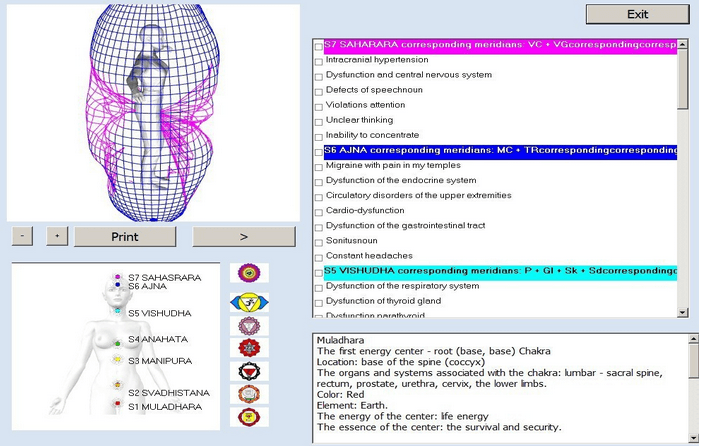


How Does 9d nls vector Biofeedback Work?
9d nls vector Biofeedback utilizes electro-dermal sensors to measure Galvanic Skin Resistance (GSR), also referred to as Electro-Dermal Response (EDR). GSR measures mild electrical impulses on the surface of our skin, which change due to moisture. The moisture of the skin changes according to the body’s degree of stress and/or relaxation. There is a direct relationship between sympathetic nervous activity and emotional arousal. GSR is so sensitive it can even measure fluctuations in emotional states; think about the lie detector, for example.
9d nls vector Biofeedback instruments measure muscle activity, skin temperature, electrodermal activity (sweat gland activity), respiration, heart rate, heart rate variability, blood pressure, brain electrical activity and blood flow. There are many types of biofeedback: GSR, EEG, CAT scan, MRI, etc. These technologies are able to capture the bodies’ analog electrical signals and translate those signals into meaningful information through complex algorithmic software that a technician can then decipher.
Research shows that biofeedback, alone and in combination with other behavioral therapies, is effective for treating a variety of medical and psychological disorders. 9d nls vector Biofeedback is currently used by physicians, nurses, psychologists, counselors, physical therapists, occupational therapists, a host of other professionals and laypeople alike.
In 1987, Schneider found that 9d nls vector Biofeedback is effective in reducing physician visits, medication usage, duration and frequency of hospital stays, as well as reducing mortality and enhancing quality of life.
Studies by Jonas and Levin show 9d nls vector Biofeedback as an ideal intervention for patients who demand:
l Gentler, less toxic and less invasive first line interventions
l More integrative and alternative therapeutic options
l More information and choice in making the best possible decisions for their care
l More participation and involvement in their treatment
Leading doctors and scientists are now viewing biofeedback, in its aspect of being a psycho-educational therapy, stating: “One of the most fundamental and critically necessary strategies for reducing long term health care costs and improving health and quality of life is appropriate, timely, psychological and educational interventions.”
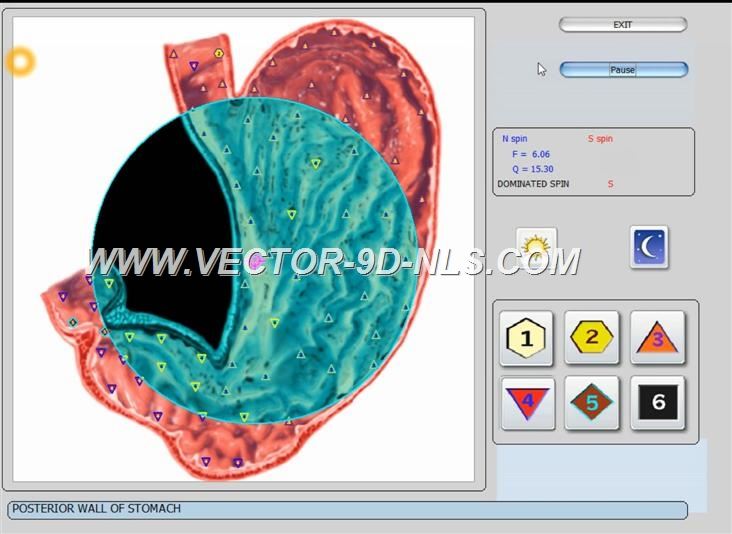


Who and Where need use the METATRON NLS ?
People who fall under any of the following categories are welcome, advised and will find benefit in using and having a Metatron 4025 Hunter device: Physicians, Naturopaths, Osteopaths, Chiropractors, Dietitians, Licensed Nutritionists, Nurse Practitioners, Registered Nurses, Physician Assistants, Integrative Medicine/CAM Program Directors, Practitioners of Traditional Chinese Medicine (TCM) and Complementary Medicine, Homeopaths, Massage Therapists, Medical SPAS, Wellness and Fitness Centers, Cosmetic Salons, Pharmacists, Medical Students and Faculty, Licensed Herbalists, Anti-aging and other Alternative Medicine Practitioners.No doubt, Metatron 4025 Hunter will be your new corporate business model in coming future. It conveys the positive effects and the deep impression on your clients, holds their attention and makes them come back again and again to your business circle. It creates a lot of benefits and makes a lot of money from the following ways in expanding markets on preventive medical fields, medical checkup and its follow-up products or peripheral commodities for a long-term period.
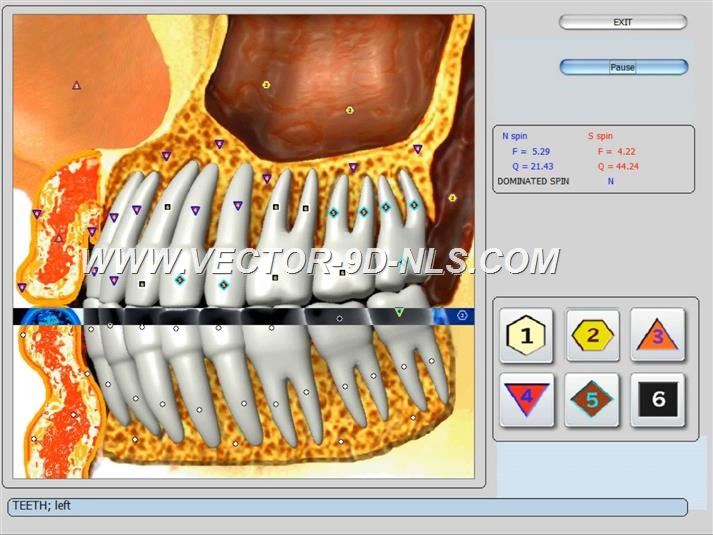

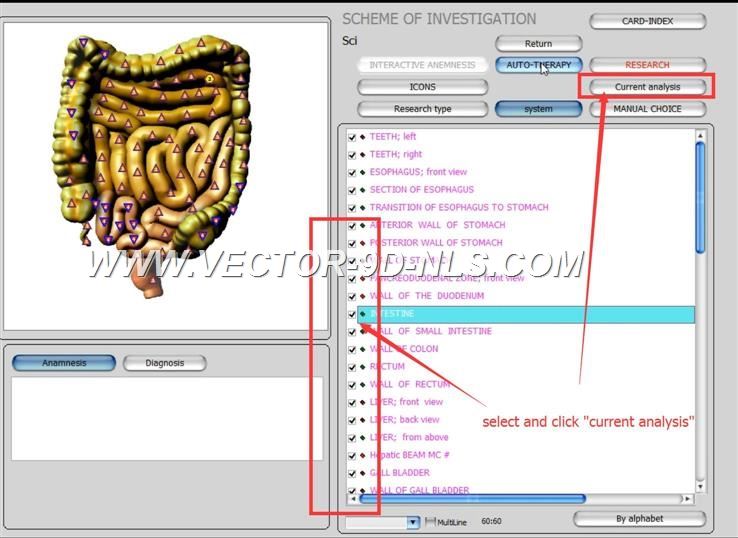

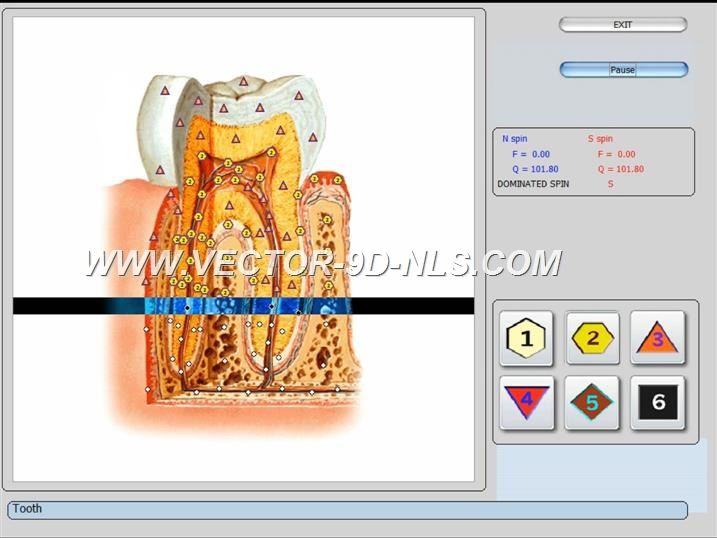

9d nls vector
Oberon NLS DOG-ANALYSIS manaul
Metatron NLS CE certifications
MRI and NLS – Diagnostics of Ankle Joint Damages
NLS – Diagnostics of Athletic Injuries and Muscles




